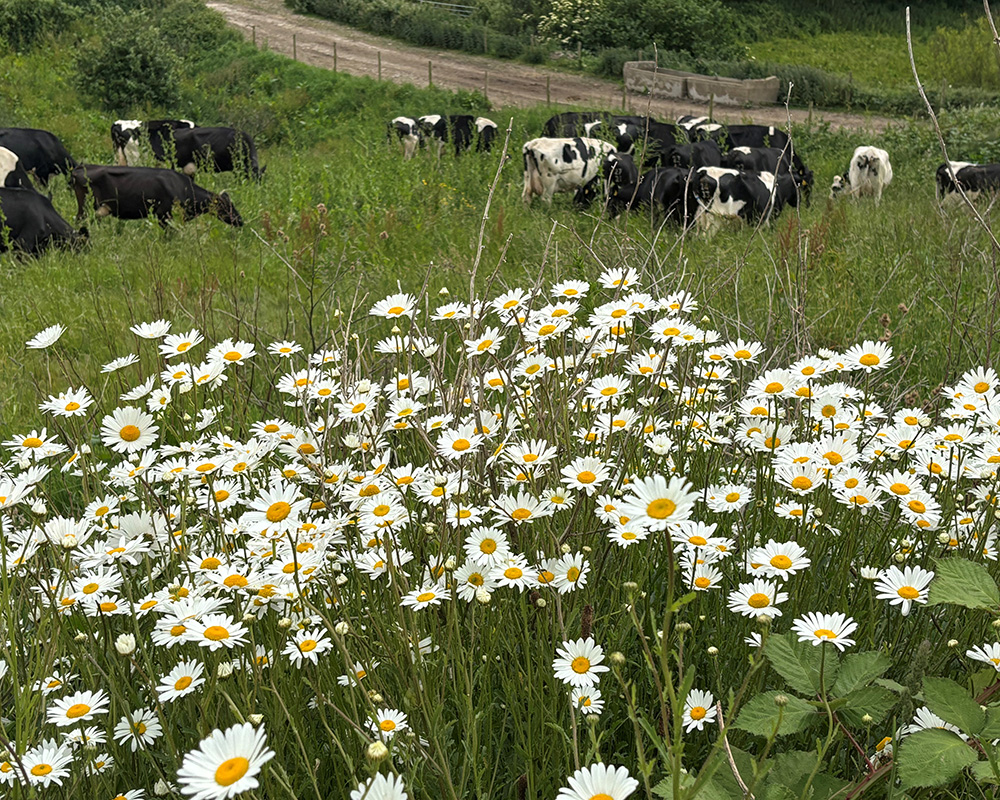Herbal Ley
Planting herbal leys across the farm and rotationally grazing with our cows is helping to enrich our 6 inches of soil. Porsham Farm has shallow soils on free draining shale rock making it very prone to drying out. In these times of erratic weather patterns we are constantly working on how to not only to look after what we have but also to increase it.
A herbal ley is a mixed species pasture containing Grasses, Herbs and Legumes. The last one we planted contained Timothy, Creeping Red Fescue, Chicory, Plantain, Birds foot, Yarrow, Sheep’s Parsley, Sheep’s Fescue, Meadow Fescue, Cocksfoot, Lucerne, Red and White Clover and Fenugreek.
These species help us to recreate grazing that is similar to historic pastures that England would have had pre 1940.


The different species provide good ground cover for nesting birds such as the Partridge, Skylark and Lapwings and provide additional flowers to visit for pollinators eg bees, butterflies and hoverflies.
Chicory is very deep-rooted which means it can access nutrients that have passed below the soil profile that shallow rooted plants such as grasses can reach. These nutrients which are used by the plant to grow are deposited back on the surface by the cow in her dung. Thus allowing these nutrients to be used by shallower rooted plants.
Clovers and Lucerne are legumes, meaning they fix atmospheric Nitrogen using symbiotic bacteria in their root nodules. This ability also allows other plants such as grasses and herbs when grown with legumes to access this important nutrient, what they cannot obtain from the atmosphere themselves. Clovers often grow out rather than across the ground – they therefore cover the bare ground quicker than grass and this helps protect bare soil from rainfall.
Most importantly the way we holistically graze our pasture captures carbon from the atmosphere and transfers it into the soil as carbon compounds. This increases the soil organic matter which helps the health and structure of the soil, allows more water to percolate through to the water table below and reduces run off. Thus ensuring we are protecting not only our own soils but the land, homes and water courses further down the valley.


